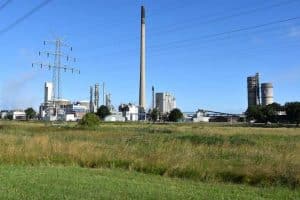While hydrogen is indeed a versatile energy carrier, the transportation of large quantities over long distances remains a challenge. One solution could be green ammonia as it can be conveyed and stored in a more manageable way than hydrogen.
Ammonia boasts a number of positive attributes that have the potential to make it an important carrier of energy. The advantages include not just its chemical and physical properties, but also infrastructure. For no other chemical in the world is produced in such immense quantities as ammonia. Therefore the technology required for ammonia manufacture and transportation does not have to scaled up laboriously as the necessary facilities are already well established in large corporations.
According to the International Energy Agency (IEA), around 31 megatons of hydrogen were needed for ammonia production in 2019. Consequently, ammonia manufacturing ranks second in terms of the biggest hydrogen consumers, right after refineries – and this particular use of hydrogen has increased significantly in the last few years. Both fertilizers and other derived products are experiencing growing demand.
Ammonia production is also top of the list when it comes to energy input and carbon dioxide emissions, coming in first place for chemicals. Any company considering making green ammonia, must first find a way to produce the required hydrogen in a sustainable manner. Up until now, hydrogen has generally been created using fossil-based hydrocarbons, usually in the form of natural gas. If the 31 million tons of hydrogen described by the IEA is to be manufactured using renewable energy via electrolysis, then roughly 140 terawatt-hours would be necessary at an input of 4.5 kilowatt-hours of electrical energy per kilogram. By way of comparison, the entire European Union generated approximately 417 terawatt-hours of wind power in 2019.
Ammonia is produced almost exclusively via the Haber-Bosch process. Developed over 100 years ago, this procedure made it possible to convert atmospheric nitrogen to ammonia for the very first time. Since then, the process has also been used as a low-cost method of fertilizer manufacture which has resulted in a considerable increase in agricultural yields – albeit not without ecological side effects. […]
… Read this article to the end in the latest H2-International
Author: Eva Augsten


























0 Comments